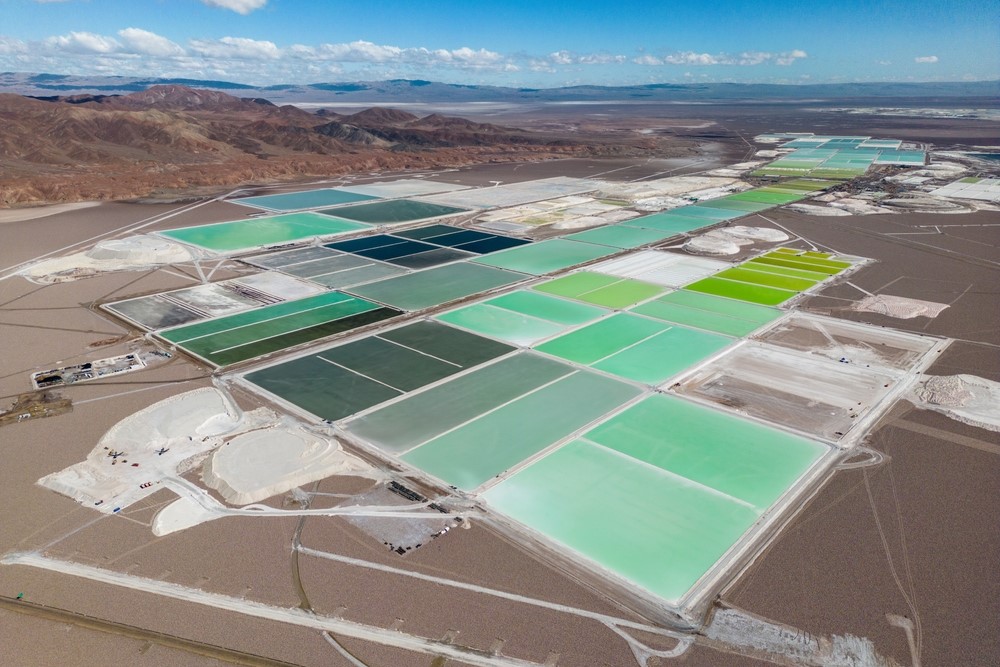Standard Lithium and Equinor’s Smackover Lithium Project Shows Strong Economic Potential
Standard Lithium and Equinor’s joint venture, Smackover Lithium, has released promising results from its definitive feasibility study (DFS) for the South West Arkansas (SWA) lithium project, revealing favorable economics for what could become the first commercial lithium production facility in the resource-rich Smackover Formation.
The project aims to extract lithium from underground brines in th
...
Standard Lithium and Equinor’s Smackover Lithium Project Shows Strong Economic Potential
Standard Lithium and Equinor’s joint venture, Smackover Lithium, has released promising results from its definitive feasibility study (DFS) for the South West Arkansas (SWA) lithium project, revealing favorable economics for what could become the first commercial lithium production facility in the resource-rich Smackover Formation.
The project aims to extract lithium from underground brines in the Smackover Formation, a geological feature spanning from Florida to Texas that experts believe contains over 4 million tonnes of lithium. This domestic resource could significantly strengthen the U.S. battery supply chain amid growing demand for lithium in electric vehicles and energy storage systems.
“The robust economics from our SWA project DFS confirm what we’ve known for a long time – that this is a world-class asset and opportunity,” said Andy Robinson, Standard Lithium’s president and COO. “Through years of extensive testing and development, we have substantially de-risked the process technology and increased our confidence in project execution.”
The greenfield development project received substantial federal backing in January 2025, with the U.S. Department of Energy awarding a $225 million grant to support Phase 1 construction. This funding aligns with broader U.S. government initiatives to secure domestic supply chains for critical minerals and reduce dependence on imports.
According to the DFS, the facility is designed to produce 22,500 tonnes per annum of battery-quality lithium carbonate by extracting lithium from brine with an average concentration of 481 milligrams per liter. The project has a planned operational life of at least 20 years, with potential for expansion based on market demand and further development.
The estimated capital expenditure for the project stands at $1.45 billion, a figure derived from an 18-month front-end engineering design process. This approach has provided a higher degree of capital definition than typically found in DFS-level studies, incorporating lessons from pilot operations and suggesting potential for improved capital efficiency in future phases.
Resource estimates indicate measured and indicated resources of 1,177,000 tonnes of lithium carbonate equivalent (LCE), with an average brine concentration of 442 mg/L across a 0.5 km³ brine volume. Proven reserves are estimated at 447,000 tonnes LCE from a 0.2 km³ brine volume with a higher average concentration of 481 mg/L.
Since completing the project’s prefeasibility study, Smackover Lithium has conducted additional exploration, including re-entering existing wells and drilling a new infill well. These efforts have helped upgrade resource classification and improve modeling of proven and probable reserves.
For lithium extraction, the joint venture will use Koch Technology Solutions’ lithium selective sorption process, a direct lithium extraction (DLE) method designed to be more efficient and environmentally friendly than traditional evaporation pond systems. The licensed technology includes performance guarantees and is expected to enhance the project’s viability.
Importantly, Smackover Lithium has secured regional exclusivity for this technology within the Smackover Formation through a joint development agreement. This exclusivity could enable cost optimization and scalability across other parts of the formation in the future.
The DFS release comes at a critical time for the lithium market. Global demand continues to rise with the expansion of electric vehicle markets and increasing investment in renewable energy infrastructure. Currently, the United States relies heavily on imported lithium, primarily from South America and Australia.
If the SWA project advances to construction and operation, it would represent a significant milestone in developing a domestic lithium supply chain. The Smackover Formation has long been recognized for its potential to support U.S. lithium independence, but until now, no commercial-scale lithium extraction has been established in the region.
The project’s progress will be closely watched by industry stakeholders, particularly as the U.S. seeks to reduce its reliance on imported critical minerals and build resilience in its clean energy supply chains.


